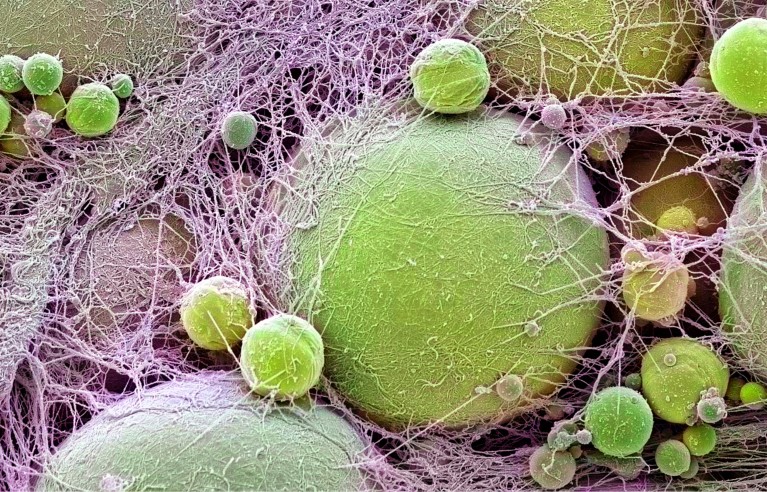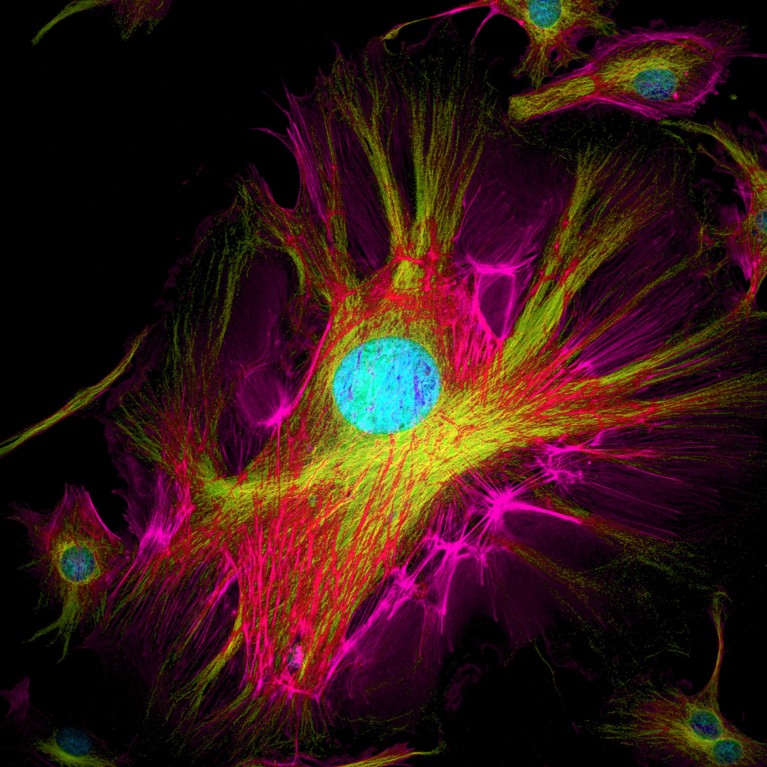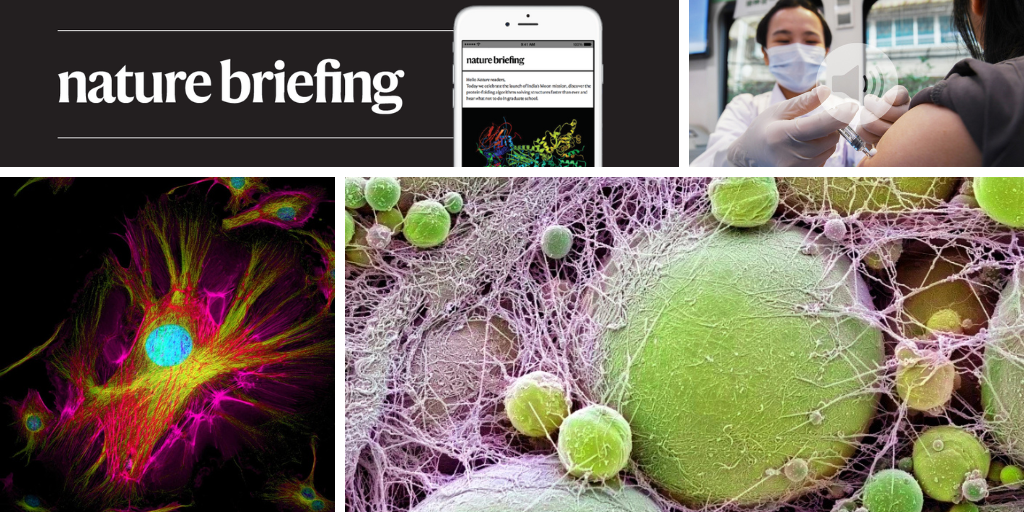You have full access to this article via your institution.
Hello Nature readers, would you like to get this Briefing in your inbox free every day? Sign up here.

The MC4R gene promotes gain of fat tissue (pictured, artificially coloured fat cells) but suppresses cholesterol levels.Credit: Steve Gschmeissner/SPL
People with obesity due to relatively rare forms of a gene called MC4R have lower levels of ‘bad’ cholesterol and reduced rates of heart disease than do people with a similar body-mass index. The study emerged from an effort to understand the fundamental mechanisms that regulate body weight and why some people with obesity maintain good heart health. The results could point the way to better ways of staving off cardiovascular disease, suggest researchers.
Reference: Nature Medicine paper
Success rates for Europe’s leading research grants are declining — some to single percentage points — as a surge in applications far outweighs the funds available. Data gathered by Nature show that researchers, especially those at the start of their academic journeys, are facing increasingly fierce competition to pursue research careers. “We’re extremely pleased that there is such a high demand for ERC grants. It shows that people have ideas for fundamental science, for frontier science, that there’s a need for it, there’s a desire for it,” says Maria Leptin, president of the ERC. “The flip side is we don’t have more money.”
Features & opinion

Fluorescent dyes can help researchers to visualize the structure of a cell — but it can be difficult to use more than a handful.Credit: David Becker/SPL
Fluorescent dyes can help researchers to visualize the structure of a cell — but it can be difficult to use more than a handful because their colours only vary by so much. Now researchers have designed more than two dozen fluorescent proteins that differ not only by colour, but also in how much time they spend in their excited state — a property called the fluorescence lifetime. The researchers call these molecules time-resolved fluorescent proteins, or tr-FPs.
One of the most compelling cryptographic puzzles in the world sits outside the headquarters of the US Central Intelligence Agency. Now two aficionados of Kryptos, a sculpture by Jim Sanborn, have cracked the code — not through mathematics but by using library science. They realized that the answer to the last remaining unsolved portion was hiding in plain sight in the Smithsonian’s archives. So far, they have kept the solution to themselves — but their discovery has kicked off a chain of events that encompasses the mercurial art market, the passionate cipher community, the sculptor’s own wishes and the question of what a ‘solution’ really means.
The New York Times | 8 min read
A pair of overconfident explorers are faced with a dire warning in the latest short story for Nature’s Futures series.
The H5 subtype of influenza viruses — which includes the H5N1 bird flu virus that is infecting US dairy cows, and killing poultry, wild birds and mammals — could cause a pandemic if a variant evolves to spread between people. But, because there are multiple possible culprits, it has been hard to pre-prepare vaccines. Now, a team has used information on how H5 variants evolved to design a vaccine that, in animal studies, confers broad immunity.
Nature Podcast | 22 min listen
Subscribe to the Nature Podcast on Apple Podcasts, Spotify or YouTube Music, or use the RSS feed.
Today our penguin-search puzzle takes us to the Isle of Mull in Scotland, the native land of the elusive Eurasian otter (Lutra lutra), majestic white-tailed eagle (Haliaeetus albicilla) and common Briefing editor (Flora Graham). Can you find Leif Penguinson?
The answer will be in Monday’s e-mail, all thanks to Briefing photo editor and penguin wrangler Tom Houghton.
This newsletter is always evolving — tell us what you think! Please send your feedback to [email protected].
Thanks for reading,
Flora Graham, senior editor, Nature Briefing
• Nature Briefing: Careers — insights, advice and award-winning journalism to help you optimize your working life
• Nature Briefing: Microbiology — the most abundant living entities on our planet — microorganisms — and the role they play in health, the environment and food systems
• Nature Briefing: Anthropocene — climate change, biodiversity, sustainability and geoengineering
• Nature Briefing: AI & Robotics — 100% written by humans, of course
• Nature Briefing: Cancer — a weekly newsletter written with cancer researchers in mind
• Nature Briefing: Translational Research — covers biotechnology, drug discovery and pharma


